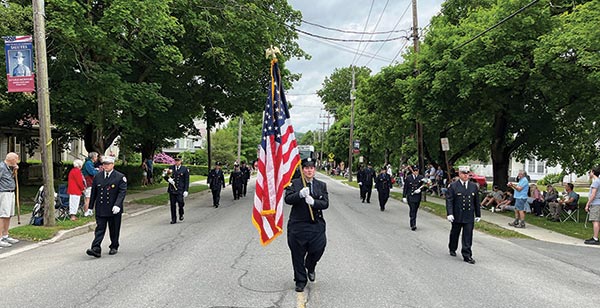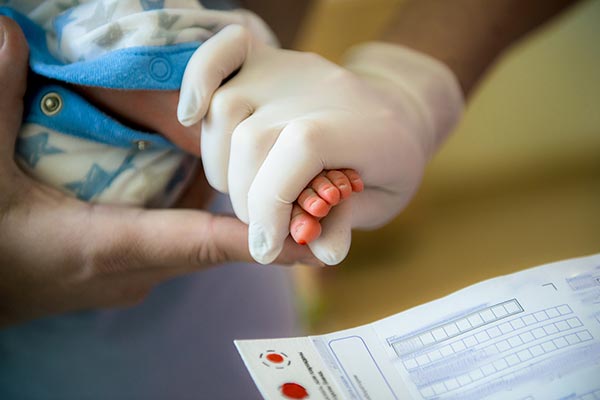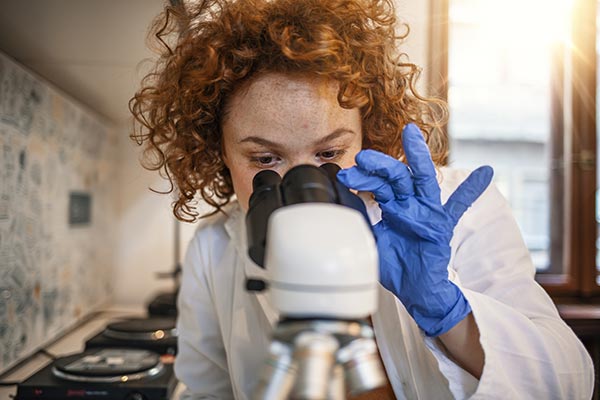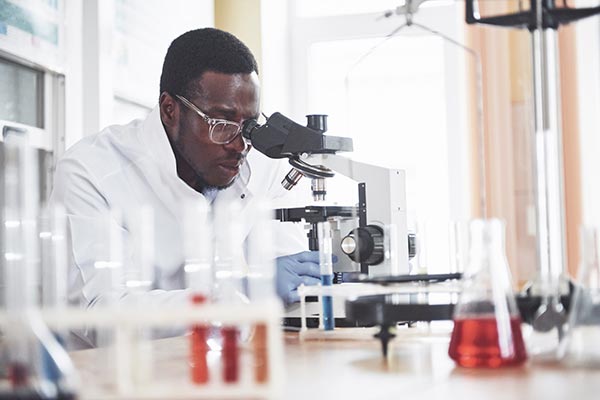Recent Posts
THE STORY OF MY WILSON DISEASE: AGE 8 TO 53
By Barbara Noci I was born on the 6th of April 1972 in Empoli, a little city near Florence in [...]
Travis’s Story of Wilson Disease
Rare and Rural By Rhonda Rowland, WDA President We all love a small town. Images come to mind of holiday [...]
Newborn Screening for Wilson Disease
A 25-year dream coming close to reality By Alice Williams, WDA Communications Director Since the 1960s, the United States has [...]
Can Copper be Absorbed Through the Skin?
By Edward Tabor, MD, WDA Board Member The main source of copper for humans is food, and Wilson disease patients [...]
They Said “Yes” to Gene Therapy
By Rhonda Rowland, WDA PresidentWe continue the story of two trailblazers who are among the first Wilson disease (WD) patients [...]
Meet the Inaugural Gene Therapy Candidates
By Rhonda Rowland, WDA President The two gene therapy clinical trials for Wilson disease (WD) launched by Ultragenyx and [...]
They Said “Yes” to Gene Therapy

We continue the story of two trailblazers who are among the first Wilson disease (WD) patients to volunteer for one of the two gene therapy clinical trials now underway for our rare genetic liver disorder. Emily signed up for the Ultragenyx trial and Warren volunteered for the Vivet trial. In our Winter 2023 newsletter we introduced them to the WD community. Emily received her diagnosis five years before on her 35th birthday, while Warren was diagnosed in 1980 at age seven. Emily is a wife and mom to a four-year-old son and works as a school secretary. Warren is a husband and dad to an 11-year-old daughter and had to give up his job as a preacher due to WD complications.
The story of their patient experience left off with Emily and Warren facing the decision of whether or not to participate in a trial designed to determine if gene therapy in WD patients is safe, and works.
Why Emily Signed up for the Ultragenyx trial
Life was good when Emily got a call from her WD care team at Indiana University (IU) asking if she’d consider being part of the Ultragenyx gene therapy trial. IU is one of 18 study locations in the United States, Canada and Europe.
“At first I was going to absolutely say ‘no’, because this was a double blind study. I have a four-year-old son and I can’t take the risk,” said Emily.
When the study was launched, it was a double blind, placebo controlled trial. That means some study participants get the actual therapy, while others get a placebo. Neither the doctors nor patients know which one they got. In the Ultragenyx trial, three months after the gene therapy infusion, standard of care therapy is slowly withdrawn.
The idea of not knowing if she was getting gene therapy or a placebo – and then having the safety net of her standard of care medication removed was daunting. “I asked tons and tons of questions,” Emily recalls, “some serious, some silly and they answered them all. They reassured me that while it was double blind, they would gradually decrease my trientine, and if my urine or blood showed I was going in the wrong direction, I would be put right back on my medicine.”
Ultragenyx made a change to its study protocol to drop its placebo arm in this first stage study, but Emily didn’t know that would happen when she was wrestling with her decision. Before she was willing to give an answer either way, she wanted to know if she had immunity to the viral vector, or carrier, being used to deliver the trans gene to her liver. It’s estimated that about one-third of people will already have immunity to the particular viral vector used in a gene therapy.
“I honestly thought they were going to tell me I had been exposed, and then no big deal,” said Emily. “I don’t know how, but I had not been exposed to the vector virus. So then, the nervousness and excitement set in, realizing that now was my opportunity.”
The tipping point for Emily, was the opportunity to be freed from the burden of taking multiple daily doses of trientine, which she had to refrigerate. Cost was also a factor. Even with good insurance the co-pay was burdensome when juggling daycare costs, a mortgage and two car payments. Access was another problem. She had a tough time finding a pharmacy in her area to fill the medicine because of its expense and the need for cold storage.
Taking all of these factors into consideration, and with the support of her husband and family, she decided to sign on for the trial.
“Worst case scenario is that I’d find out I was on the placebo and would need to continue with my standard of care medicine,” explained Emily. “I had a lot of trust in them.”
Why Warren volunteered for the Vivet trial
Warren was a clinical trial veteran by the time he was asked if he’d consider signing on for Vivet’s gene therapy trial.
“I’ve done some MRI studies, I’m in the Patient Registry study and I was in a study comparing penicillamine to a stable form of trientine,” said Warren.
These studies were conducted by Dr. Michael Schilsky at Yale’s WD Center of Excellence. Yale is one of nine study locations in the United States and Europe recruiting patients for the Vivet trial.
“He approached me and said, ‘We have this gene therapy study, would you be willing to participate?’” And I said, ‘Dr. Schilsky, I have all the time in the world,’” recalls Warren. “He brought me back to a normal life. I said, ‘If I can be of any help, sure.’”
Warren had been referred to Dr. Schilsky by a local neurologist after exhausting all available therapies to alleviate major tremors that ensued after a seizure put him in the hospital. The cause turned out to be the result of a reduced penicillamine dose that was recommended by an uninformed physician. While a return to a full dose of penicillamine eliminated Warren’s tremors, lingering cognitive issues have kept him on disability.
“That is the one benefit of being on disability, my time is mine, and I can choose how to use it,” said Warren. “I am very humbled that he would want me to be in this study.”
To qualify for participation, candidates need to pass a series of medical tests. One, is patients must have two known copies of the disease-causing mutation of the ATP7B gene. Warren had only one. Vivet eventually changed its protocol to include those with one known copy of the faulty gene – or none – if all other testing supports the diagnosis of WD. While every WD patient has two disease-causing mutations of the ATP7B gene, not all have been identified. Secondly, potential candidates must undergo imaging and other testing of the brain, abdomen and liver. The final qualifying test, is ensuring the patient does not have immunity to the viral vector that carries the normal copy of the ATP7B gene to the liver.
“Well, I just happened to not have antibodies to the viral vector they are using,” said Warren. “I’m a person of faith. If that’s not God saying ‘you need to do this,’ I don’t know what is.”
Still, Warren’s wife, also a minister, wasn’t so sure. “She had some major concerns about gene therapy and didn’t want me to be the first one to do it.”
Warren assured his wife that he didn’t think he was going to be the first patient since there were others in line ahead of him who were also undergoing testing. His decision came down to his belief in his God-given mission.
“You had asked me when I felt the ‘call’ to go into ministry,” explained Warren. “I believe we are all called to purpose in life. I thought my calling was into ministry. It was, and it wasn’t. My ministry is to give back to the Wilson’s community. Being diagnosed so young, God had a purpose and a plan for me way back then. And, based on my faith, and just being a decent human being, if there is something to be learned from me that can help another patient have a more normal life, then by all means use me.”
Emily’s infusion day and some unexpected news
Emily’s infusion day was at the end of May 2022, just before the Indianapolis 500. She was asked to be at IU by seven in the morning.
“It was scary and nerve-wracking,” she recalls. “My husband came with me, we arrived early and got checked into our room. We knew it was going to be a long day.” The infusion itself takes about an hour, but Emily was told that she’d need to stay for a full day of observation, since reactions may occur with gene therapy.
“They had my IV ready to go. We did our little prayer, good vibes, we hope it’s the drug and not the placebo,” Emily recalls. Because the thawing of the IV bag in the hospital pharmacy took longer than expected, her start was delayed by a couple of hours. “I thought, ‘oh no, this might be a bad sign,’ but the rest of the day was fine. It felt like I got a regular IV. I brought work to do, but my husband kept getting up and getting snacks all day long. He was so nervous, pacing, walking around, driving me nuts!”
Emily was released to go home. They left later in the day then anticipated due to the delayed start and the hospital was busy with a lot of traffic due to the Indianapolis 500.
“So, there’s always something to watch,” said Emily. “I did feel hot, kind of extra hot, but it was the end of May so I didn’t think anything of it. It could have been the steroids that you take prior to the infusion.”
Some kind of immunosuppression is given before and after gene therapy to prevent the viral vector that’s carrying the new trans gene from being rejected by the liver. If that happens, the gene therapy fails.
“I felt from my gut going forward from the infusion that I got the real deal because I was having symptoms with the steroid treatment,” said Emily. “I was sweaty, had insomnia, a lot of energy, brain fog. My doctor prepared me and said if it’s the real steroid treatment you’re going to have symptoms and not feel the best.”
In the Ultragenyx trial, patients take immunotherapy drugs for two months. “It was long and unpleasant at times, but it was so worth it!” said Emily.
Following the gene therapy infusion, there are a lot of clinic visits to ensure patient safety.
Visits are weekly for a month, then drop to one visit every two weeks, then monthly visits for the first six months of the trial. Some last about an hour, others are half-day or full-day appointments. All are in-person at the clinic. Each requires a 24-hour urine collection from the previous day.
How did Emily manage it all with a full-time job, four-year-old son and an hour drive to and from the IU clinic? That’s where support from her family and employer came into play, as well as strong organizational skills!
“I would schedule these appointments in the morning after I dropped off my son at daycare,” said Emily. “For work, I would have enough notice to get my paid time off (PTO) approved and to find a substitute.” To help alleviate the burden, Ultragenyx provides a stipend that covers travel expenses and her time. For longer clinic visits, meals are also reimbursed.
Six months after her infusion, she was given some unexpected news. Ultragenyx changed its study design and dropped the placebo arm of the study. It was determined that at this early stage in the trial, it was best for both the doctors and patients to know, and learn together, in determining safety and the best gene therapy dose to use going forward.
“I was incredibly grateful and relieved that yes, this wasn’t a waste of time, even though I knew if it didn’t help me maybe it could help somebody else in the future,” said Emily, “but I’m completely relieved and grateful that I had this opportunity.”
Warren’s infusion day and a surprise
The week before Christmas, Warren took a train to New Haven, checked into a Yale hotel and had a few more baseline tests to prepare for the day of his infusion, which would be in the hospital.
“As you know, my wife is a pastor and the week leading up to Christmas is busy season,” said Warren, “so my brother-in-law came up to be with me just in case there were any major issues.”
Warren had total confidence in the Yale medical team. “This study was being run by Dr. Schilsky, and I knew he wouldn’t put me in any kind of danger.”
Up to this point, Warren assumed he was not the first Vivet gene therapy patient, knowing there were others ahead of him in the testing process. On the day of his infusion, after he was hooked up to the IV, he asked, “Dr. Schilsky, how many other people are getting the treatment? He said, ‘None.’” And that’s how he found out he was the first gene therapy patient in the trial. “Apparently, the other patients had flunked out!” That is, they did not qualify based on the screening tests.
Immunity to the viral vector is one reason patients don’t end up qualifying. However, the two trials are using different viral vectors, so if a patient is immune to the vector being used in one trial, they might qualify for the other.
Warren was informed that there could be a reaction to the gene therapy infusion. Gene therapy studies done in other diseases showed it was a possibility. Because of what’s been seen in other gene therapy trials, the Yale Medical Center Hospital was prepared with what’s known as rescue drugs, if a reaction occurred.
“Speaking as a patient, if you’re going to give me gene therapy, I want to be staying in the hospital for 24 hours with medical staff around me in case anything happens,” said Warren. “They’ve been overly cautious with me, and they’ve explained that they have built-in peer review.”
The doctor-patient relationship is key, according to Warren.
“I never would have signed up for this unless Dr. Schilsky was involved. I trust his judgment and that he’s not going to do anything to negatively impact my health. You need that connection to feel safe, and because of the time involved.”
Warren was home for Christmas and returned to Yale a week after his infusion for follow-up testing. After that, a home health nurse visited him weekly and clinic visits were alternating weeks. One month post infusion, the home health and clinic visits drop tremendously. Since the study launch, Vivet has reduced the total number of clinic visits but has been kept to the minimum needed to ensure patient safety and to best evaluate response to the gene therapy.
“The study pays for your travel expenses, food and lodging as well as your time for all of the visits,” said Warren, “It’s a nominal amount, I’m not raking in the big bucks, but that’s not the point of it. They want to pay for the time you’re investing.”
The Vivet trial requires three months of immunotherapy drugs to prevent rejection of the trans gene. For Warren, the side effects were typical of what his informed consent indicated he could expect from additional treatments used in the study such as steroids and immunosuppressors. In addition, he was also asked to follow infection-control procedures like we all experienced during Covid. “You wear a mask, use hand sanitizer, don’t visit someone who is sick.”
In the Vivet study, standard of care medicine won’t be withdrawn until there’s evidence of an adequate response to the gene therapy dose. This is done by using a radiocopper test. It’s a well-established test that uses small doses of radioactive copper to study the metabolism of copper in healthy volunteers and Wilson patients, and is still used to help diagnose difficult cases.
Warren got a baseline radiocopper test before his infusion, another at the three-month mark, and the next will be at his eight-month clinic visit, “There’s no discomfort with the test,” said Warren.
Six months after Warren’s infusion, he had set up camp at a campground an hour from home in his vintage luxury recreational vehicle (RV). It was his 50th birthday present.
“I’ve always been attracted to the idea of having an RV. For me, it’s a very peaceful, mobile retreat center,” said Warren. “Once, the home health nurse even came to the campground to do the visit. She’s very flexible.”
His wife and daughter would join him there for Father’s Day weekend.
“The study has had a limited impact on my life, time wise, and it’s not been a major constraint in letting me do the things I want,” said Warren. “Whether or not it works in me, it will help the study continue. We can’t advance this kind of research unless you have volunteers willing to be the first.”










